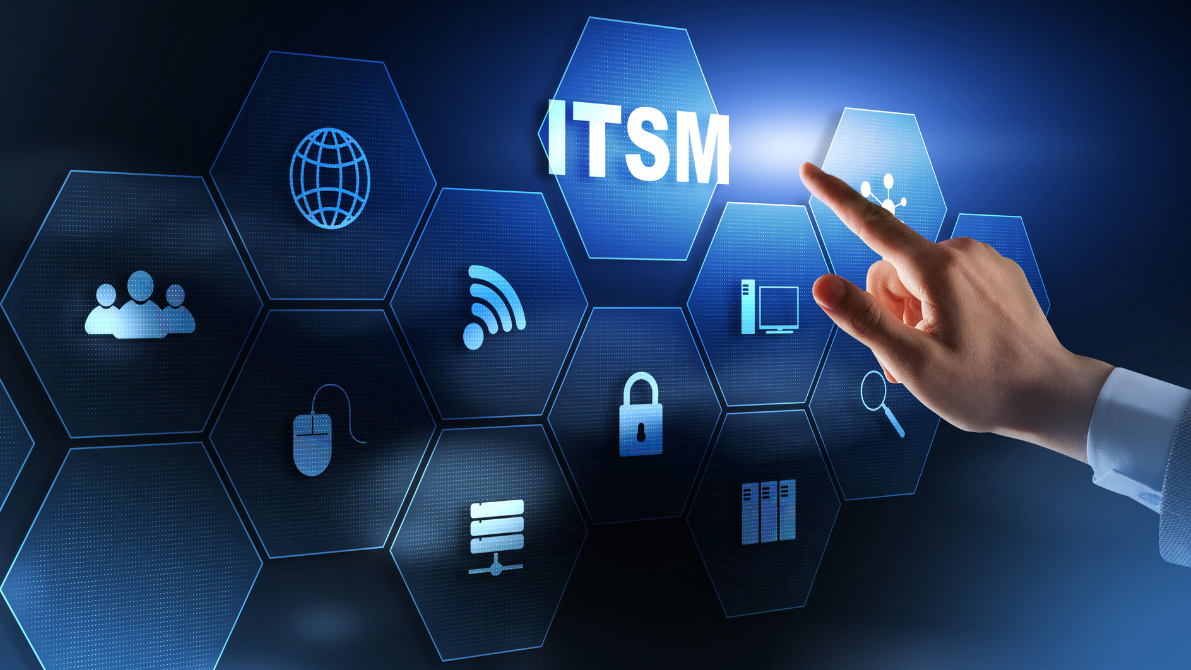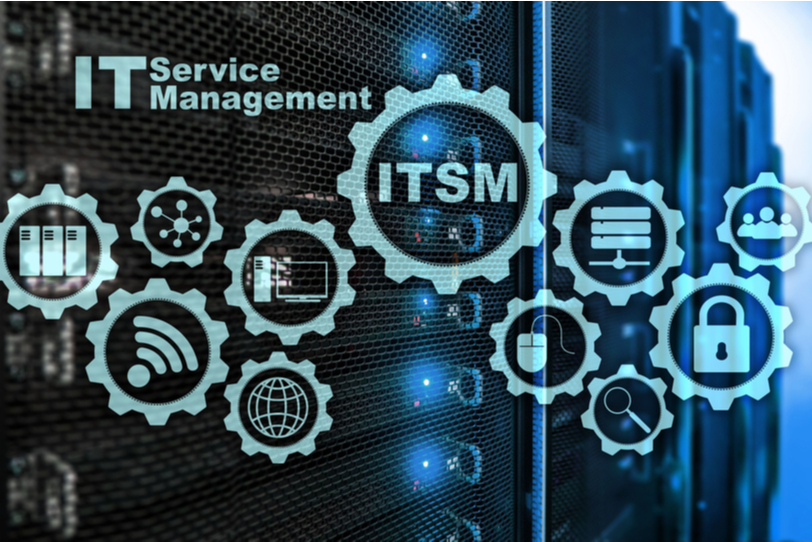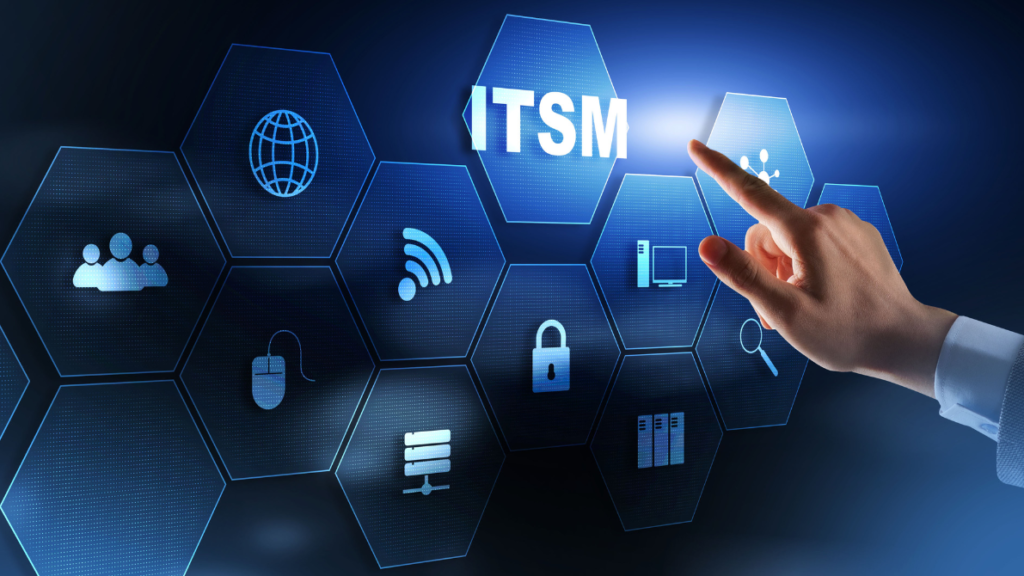Why is IT Service Management Important for Businesses?

Why is IT Service Management Important for Businesses?
It is key in keeping businesses running and growing in the post-pandemic world. Yet, many IT teams fix things as they break, missing the chance to become true partners. By using IT Service Management (ITSM) methods, IT can change. It can move from handling tech issues to focusing on real service and strategic growth. With ITSM, an IT department becomes skilled in service, smart in business, and fast to deliver solutions.

Key Takeaways
- ITSM aligns IT services with business goals to drive strategic growth and innovation.
- ITSM improves operational efficiency and cost optimization through standardized processes and automation.
- ITSM enhances service quality and customer satisfaction by putting the user experience first.
- ITSM provides greater visibility, accountability, and governance for the IT organization.
- ITSM enables digital transformation and business agility through a framework of best practices.
But what exactly is ITSM, and how can it make a difference for your company? Let’s explore the impact of IT Service Management in the new normal.
Understanding IT Service Management
IT Service Management (ITSM) is how ARK Solvers‘ technical teams handle their work. They design, plan, and provide services to clients. Unlike older tech ways, ITSM puts the customer first. It helps manage IT resources in a more modern and broad way, involving both business and IT practices.
Read More: What is Managed IT Services?
Definition of IT Service Management (ITSM)
ITSM is vital because it ensures that IT services fit a company’s big goals. ARK Solvers’ IT team aims to offer real value to their coworkers. They do this by focusing on proactive steps, working closely with business needs, improving how they do things, and being more clear and responsible.
They also aim to keep adding useful features for users and drive digital changes with ITSM tools.
ITSM vs. ITIL: The Difference Explained
ITSM handles the whole IT service setup. Meanwhile, ITIL is a famous practice within ITSM. It helps with issues and changes and launches new IT services. Through ITIL, organizations can improve their ITSM.
The Evolution of ITSM: From IT Support to Business Enabler
ITSM has moved beyond just supporting IT to helping businesses succeed. Now, ITSM aligns IT services directly with a company’s goals. It fuels digital progress and improves how work gets done. With ITSM, ARK Solvers’ IT can be a valuable, active part of the team, directly aiding the business.

Core Benefits of Implementing ITSM
ARK Solvers’ ITSM tools help companies use technology better. They connect IT services with what the company wants. This makes operations smoother and improves the quality of service. ITSM brings a lot of great benefits:
Aligning IT Services with Business Goals
ITSM ensures that IT services match a business’s big goals. It helps organizations use technology fully and seize new opportunities. ITSM’s change management plans prevent problems and keep things running smoothly.
Improving Operational Efficiency and Cost Optimization
ITSM boosts how well things work by managing IT equipment well. This saves money and makes it easier to grow. Automating tasks cuts down on manual work and makes fixing problems faster. Plus, ITSM lets everyone see how well IT services are doing.
Read More: Benefits of Managed IT Services
Enhancing Service Quality and Customer Satisfaction
ITSM jumps in to make services better and keep customers happy. It lowers costs and improves customer smiles. The CMMI model in ITSM helps track and get better at serving customers. This means services keep getting better over time.

Key ITSM Processes and Best Practices
IT Service Management (ITSM) covers many processes and best practices. These help organizations make their IT run smoothly and meet business goals. Some important processes are incident management, problem management, and change management.
Also, service catalog management, IT asset management, and configuration management are key. They help manage services, assets, and changes.
Incident Management and Problem Management
Incident and problem management are key in ITSM. They help deal with issues fast and stop them from happening again. Fast incident management means problems get fixed quickly.
Problem management looks for the reasons behind issues. This skill reduces the time it takes to fix things if services break, making customers happier with the services they get.
Change Management and Release Management
Change management and release management ensure that updates and new systems don’t cause trouble. They plan and test these changes carefully, which prevents services from breaking when updates roll out.
By having strong change management, services stay reliable. Release management also ensures that updates go smoothly. Together, they keep things working without issues.
Service Catalog and Service Portfolio Management
Service catalog and service portfolio management show what IT can do. They list IT services for everyone to see. This helps us IT smartly, connecting it with business needs. With clear catalogs and portfolios, IT can focus on what users really need.
IT Asset Management and Configuration Management
IT asset management and configuration management help businesses use their IT devices well. They take care of IT things from buying to getting rid of them. This saves money and makes IT work better.
Why is IT Service Management Important
IT service management (ITSM) is key for businesses. It leads the whole operation. ITSM allows companies to undergo digital changes and create new things by using the latest tech, like automation.
Read More: Why is IT Service Management Important?
Enabling Digital Transformation and Innovation
ITSM lets companies adopt new tech like AI and DevOps. This improves their IT services and keeps them improving. Businesses can use their IT teams for projects that help them stand out from the competition.
Improving Visibility, Accountability, and Governance
In a world with ITSM, things are clear. Everyone knows their job and how things work. This makes it easier to manage everything and make sure the IT part of a company helps meet its goals. ITSM helps use resources well, too.
Enhancing Business Agility and Responsiveness
With ITSM, companies can quickly adjust to new needs without losing key services. By following ITSM rules, companies become faster and better at seizing new chances in the market.
Implementing ITSM: Frameworks and Tools
ITSM works well with the ITIL framework. ITIL stands for IT Infrastructure Library. It provides the best ways to handle ITSM and helps companies set up standard ways to manage incidents, problems, changes, and releases. Using ITIL improves a company’s IT work and ensures that they deliver top-notch service.
Read More: IT Service Management Solutions
ITIL Framework: Best Practices for ITSM Implementation
ITIL is seen as the top way for ITSM. ITIL 4 is its newest version. It talks about a whole service approach that covers more than just IT tasks. Culture, tech, managing information, and data are all included. Using ITIL, companies like ARK Solvers can match their IT services to the business’s needs. This allows for ongoing changes and growth and always improves services.
ITSM Tools and Technologies: ServiceNow, BMC Remedy, and More
ITSM also has many tools and tech to help. This includes ServiceNow and BMC Remedy. They add things like automatic tasks, self-help options, and teamwork tools. With these, companies can better manage their IT stuff, change how they work, and respond to issues. This brings more efficiency and makes customers happier.
Conclusion
In today’s world, IT services are more important than ever for businesses. Using IT Service Management (ITSM) with a strong provider like ARK Solvers is key. It helps organizations handle complex tech needs well and stand out from the competition.
Using ITSM offers many benefits: it smooths operations, cuts costs, and boosts service quality. It also brings more visibility and accountability. Plus, it helps your business be more agile. By following the best ITSM practices and using the right tools, your IT team can become a strategic partner.
As our world changes, the role of management becomes clearer. ITSM can make your IT team vital for growth, offering the agility and support needed for the future. With ITSM, businesses can flourish by turning IT into a tool for success.
Read More: Who Needs Managed IT Services
FAQ
What is IT Service Management (ITSM)?
ITSM describes the rules and steps tech teams use to meet client needs. It’s all about understanding what the customer wants. This is different from the old way of just focusing on the tech itself.
How does ITSM differ from ITIL?
ITIL offers guidelines for ITSM, aiming to standardize processes. It covers handling incidents, solving problems, and updating systems, among other things. Tools like ServiceNow and BMC Remedy make these tasks easier with features like automation.
What are the core benefits of implementing ITSM?
By using ITSM, a company can work more efficiently and save money. It can also deliver better service and see more clearly how it’s doing. ITSM links IT to the business’s needs, boosts efficiency, and keeps customers happy.
What are the key ITSM processes and best practices?
Key ITSM routines include incident and problem management and handling changes and releases. They also cover keeping service lists, managing assets, and tracking configurations. These steps aim to quicken the resolution of issues, lessen downtime, and improve the implementation of changes.
How does ITSM enable digital transformation and innovation?
ITSM modernizes IT by adding new tech, like automation. This means IT teams can work on more important tasks. ITSM also clarifies roles and processes, adding speed and flexibility to a business.


